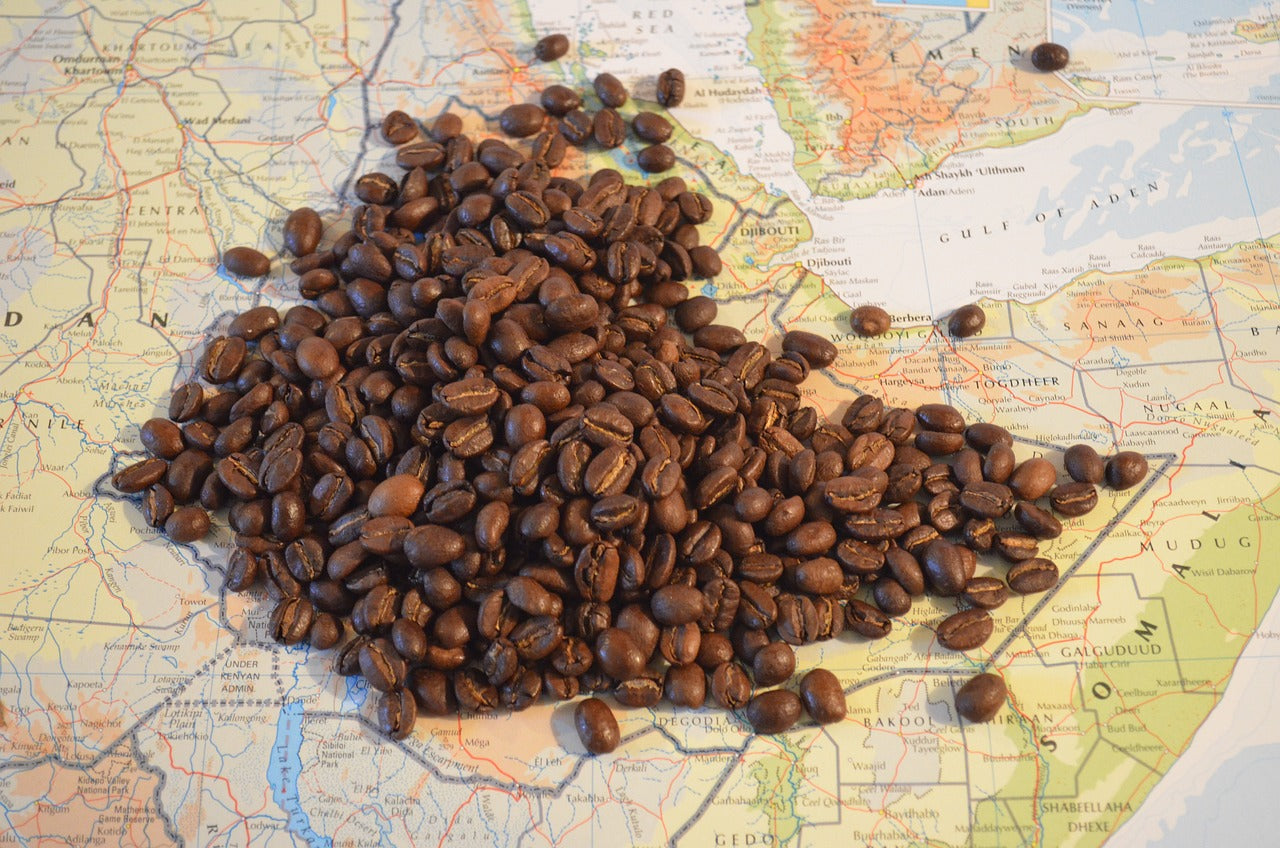
History and origin of Coffee
It is curious how coffee, despite being a product so integrated into our society, we know very little about it, its origin and its preparation. This drink became popular around the 16th century in Europe and since then a thousand theories have emerged about its origin and use.
So much so, that for many, coffee comes from Latin America. Nothing could be further from the truth, this is because this region became a large exporter of coffee to Europe in the colonial period, it being us Europeans who introduced the coffee plant for cultivation in the tropical regions of the American continent.
The first coffee trees came from the French, but first let's see how this market has evolved since its origin .
What not everyone knows is the true origin of coffee, accompany me through history and let's discover a little more about this elixir that we like so much in its natural roast.
The legend
Legend has it that back in the 5th century a shepherd named Kaldi used to climb the mountains of the region now known as Kaffa in Ethiopia to feed his small herd of goats.
Day after day Kaldi observed how his goats were attracted to the red fruits of a plant among all the vegetation in the area, but not only that, his animals seemed to become active, they jumped and looked more vigorous.
So the shepherd, Kaldi, dared to taste the fruits of that plant. Such was the energy contribution after tasting the berries that he spent the entire night without being able to sleep a wink.
The next day, the shepherd, surprised and scared by the power of those fruits, decided to collect a handful and take them to a nearby monastery where he hoped the monks could give an explanation for what had happened.
They took the berries and after verifying that the shepherd's stories were true, they investigated how to extract that potential, without much success. Until by simple chance, the grains ended up burning in the fire, releasing and intoxicating the room with aromas they had never experienced before.
But this is just a legend... we know that coffee was discovered in the ancient kingdom of Axum, predecessor of the Abyssina Kingdom (Ethiopia), around the 5th or 6th century. But this was not the drink we think of today.
In its beginnings it was not even called coffee, the ancient Ethiopians called it “ bunn ”, they tried a multitude of methods in search of extracting the best aromas and caffeine from the plant, from boiling its leaves and berries to fermenting its pulp to make came. Others prepared water-based concoctions from the toasted peels of the berries, which they called “ qirsh .”
The truth is that it is unknown how the first discoverers of coffee extracted its properties, nor the origin of roasting.
It was not until ten centuries later when the first roasting of the beans, their subsequent grinding and the first infusions in water, what we know today as coffee, are dated.
After its discovery in Ethiopia, the consumption of this energizing plant soon spread among its people. The inhabitants of these regions where coffee trees grew naturally, mostly nomads, transported the plant and cultivated it along the routes to have coffee to collect and drink.
The expansion
Such was the impact on this pre-Ethiopian society that they extended its cultivation beyond the Red Sea, to what we know today as Yemen. Region of exchange of spices and goods where coffee begins to be known by Ottomans, Arabs, Indians and other peoples of the Middle East.
The Arab towns welcomed these concoctions, coffee helped by the pilgrims on the way to Mecca extended its borders. And although the governor of Mecca Khair-Beg declared it a prohibited drink , it did not stop its expansion through the towns of Persia, Egypt, Turkey and North Africa.
Around the 16th century coffee was introduced to both India, giving rise to
his later encounter with Dutch settlers in the 17th century, by Baba Budan ; as in the Ottoman Empire, who introduced it to Europe through French and Venetian merchants.
Coffee reaches the European Continent
Starting in the 17th century, coffee spread throughout Europe . Although the French were the first to introduce coffee to Europe, it was not until Vienna that its consumption became widespread among the bourgeoisie.
Vienna was being besieged by the Ottoman Empire, who deployed a large camp with supplies and amenities to overthrow the Austro-Hungarian crown and take control of Eastern Europe.
After two months of siege, after the battle of Kahlenberg , on September 11 and 12, 1683, the Ottomans were expelled from European lands.
The Viennese troops found a multitude of sacks and grains in the camp set up by the Ottomans. And although there are several theories; some that say that coffee was previously introduced to Europe; Others think that it was a Turkish servant of the Austrian courts who helped them understand what those grains were and how to make the concoctions.
The Austro-Hungarian bourgeoisie welcomed the consumption of coffee, although they, accustomed to the world of tea, were not particularly fond of the brewing methods coming from the Middle East, so the first filters and the mixture of this with milk appeared.
Soon European societies welcomed the consumption of coffee with great ease, many coffee shops were created throughout the European map. These cafeterias later gave rise to meeting centers for intellectuals , businessmen and spaces for dissemination.
So much so that some historians claim that coffee had a great impact on the awakening of society and helped one of the most important movements in our history, the French Revolution.
Suppose Europe lived in a society governed by the consumption of wine and beer. Coffee was gaining ground, as the number of coffee shops multiplied , French citizens found a place for the exchange of philosophical knowledge, history, opinion and, above all, politics at different social levels. This causes growing discontent with the French government.
Coffee continues its expansion pace throughout Europe, reaching every corner. Europeans soon realized that coffee plants do not develop in our latitudes, so with colonization we began to export the first coffee plants to the Americas.
It is believed that it was Gabriel Mathieu de Clieu, French navy officer who brought the first coffee plant to Martinique Island in 1720.
Spain, for its part, introduced coffee to its colonies starting in 1741, when the first coffee trees arrived in Colombia with José Gumilla.
Thus, aided by colonization, coffee reached the Americas, where its cultivation and commercialization spread.
In these years, driven by colonialism and slave labor, coffee and the cultivation of coffee trees spread throughout the globe between the tropics of Cancer and Capricorn.



